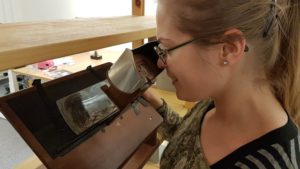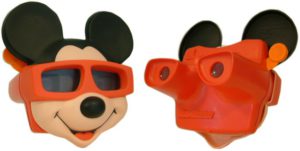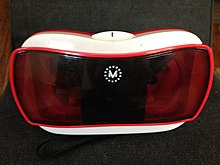This week Verkstaden (The Workshop) at campus Engelska Parken threw an opening party to everybody in the Digital Humanities network at Uppsala University. Verkstaden is going to be a place where researchers, students and other interested from different domains can meet and work with digital tools for data analysis, visualization and modeling. The combination of hardware, software and knowledge at the same place also makes Verkstaden an important learning space for students in digital humanities.
I was there of course, mingling around with the project leaders Anna Foka and Matts Dahlström. Besides eating a lot of “pepparkakor” and “salta pinnar” (Swedish gingerbread cookies and pretzel sticks) I also had a look at the mini museum that had been set up in Verkstan. My favorite was the old school stereoscope.

According to Wikipedia, the first stereoscope was invented in 1838. The long history of this device makes me think about how visualization actually is a very basic human need, something that helps us understand places and situations beyond our personal experience. Today, 3D-visualization is more relevant than ever, not at least as one of the bases for virtual reality. Exactly how those recent techniques can be used to analyze material from cultural heritage collections is something that one can experiment with in Verkstaden.


3D-viewers can be a toy to play around with as well as an object of curiosity. They can also be used (especially if combined with virtual reality-technique) as a tool to study and practice complicated situations like surgery procedures or military operations, in a relaxed environment.
